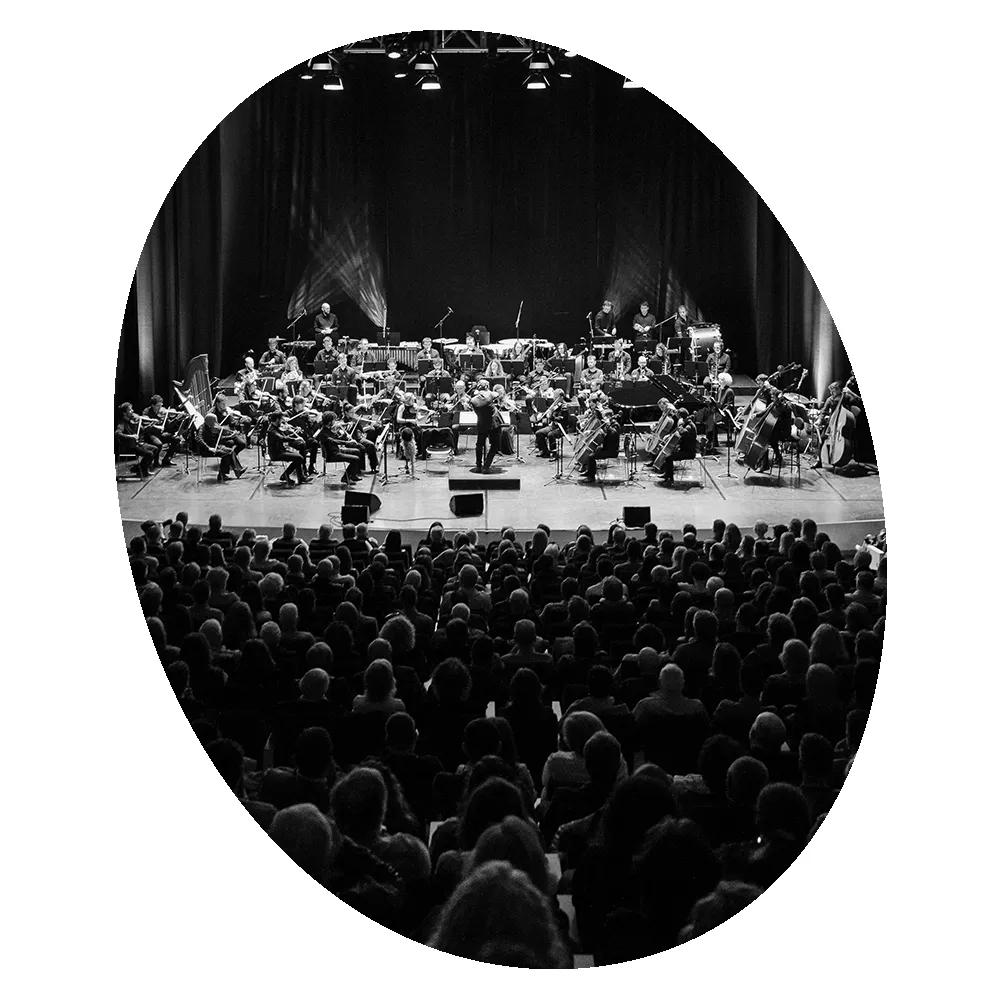In a long process initiated in Romanticism, art has gradually detached itself from official commissions, and this conquest of autonomy has altered its relationship with the environment. The 20th century witnessed radical ruptures in art with the avant-garde movements. The 21st century lives with stylistic eclecticism, the breakdown of unity and genres, the alteration of credibility, and interactivity with new technologies. All this has opened a field of individual aesthetics and unique languages, generally known as postmodernity. The program begins with Polyphonic Tango by Schnittke, “an attempt to find the middle path between humor and seriousness,” oscillating between tonality and atonality, between the banal-conservative and the banal-dissonant. In Altar de Neon, Ortiz resolves the relations between tradition and the modern world, uniting folklore, popular music, and Western styles. This duality is seen in the instrumentation, with percussion soloists playing popular instruments alongside a Western chamber ensemble. The works that complete the program take their starting point in the minimalism of the 1960s and 1970s. Einaudi, Arnalds, Rani, and Richter owe much to the great minimalists, but create modest, unsurprising, and predictable pieces. Lang, the “enfant terrible of postminimalism,” offers hypnotic, unsettling, and emotionally direct music, leaving open the question of creation and reception.
In this concert, the music of today’s generation of composers often labelled as minimalists dialogues with the works of sculptor Cristina Iglesias (San Sebastián, 1956), who is currently exhibiting at La Pedrera her monumental sculptures inspired by nature and ritual. An immersive and aesthetically hybrid proposal that upholds artistic freedom as a creative driving force and exemplifies the spirit of the Palau Fronteres cycle: opening windows to new sonic horizons.





























